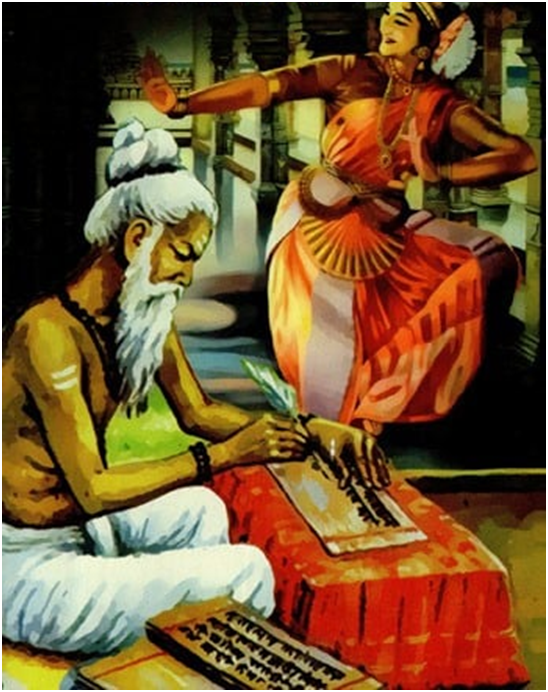Bhasa is one of the oldest known classical playwrights in the history of Sanskrit literature and may well be known as the father of Sanskrit drama. A prolific poet and dramatist, he was venerated by Kalidasa, Banabhatta, Rajashekhara and critics such as Abhinavagupta.
His master-piece Svapnavasavadattam was oft-quoted in commentaries from the 9th-12th century CE.
Bhasa’s date of birth is uncertain. He likely lived after Asvaghosa (1st-2nd century CE) as a verse in his Pratijna-yaugandharayana is probably from Asvaghosa’s Buddha-charita. He definitely lived before Kalidasa (4th-5th century CE).

Plays of Bhasa
The history of Sanskrit drama begins with the 13 Trivandrum plays ascribed to Bhasa.
The plays are generally short compared to later playwrights and most of them draw on themes from the Indian epics, Mahabharata and Ramayana. Though he is firmly on the side of the heroes of the epic, Bhasa treats their opponents with great sympathy. He takes a lot of liberties with the story to achieve this.
His other plays are not epic based.
The 13 natakas (now collectively known as Bhasa-natakachakram) found were:
Plays based on Ramayana
1 . Pratima-nataka: The statues
2 . Yagna-Phalam
3 . Abhisheka-natka: The coronation
Plays based on Mahabharata
4 . Panch-ratra: The five-nights
5 . Madhyama-vyayoga: The middle one
6 . Duta-Ghattotkacha: Ghattotkacha as envoy
7 . Duta-Vakya : The envoy’s message
8 . Urubhanga: The broken thigh
9 . Karnabharam: Karna’s burden
Other plays
10 . Avimaraka is a fairy tale.
11 . Balacharitam: describes the birth and childhood of Krishna based on Harivamsa in Vishnupuranam
12 . Pratigya Yaugandharayanam
13 . Swapnavasavadattam
Madhyama Vyayoga
Madhyama Vyayoga focuses on the name confusion between the priest Keshav Das’s middle son and the middle Pandava prince Bhima. Also, the reunion of Bhima and Ghatotkacha as father and son take place.
Uru-Bhanga
Though branded the villain of the Mahabharata, Duryodhana is the actual hero in Uru-Bhanga shown repenting his past as he lies with his thighs crushed awaiting death. His relations with his family are shown with great pathos.
Karna-bhara
The Karna-bhara ends with the premonitions of the sad end of Karna, an epic character from Mahabharata.
Pratigya Yaugandharayanam (the vow of Yaugandharayana)
Based on the legends that had grown around the legendary King Udayana, probably a contemporary of the Gautama Buddha. It tells the story of how the king Udayana married the princess Vasavadatta (his first wife).
Swapnavasavadattam (Vasavadatta in the dream)
Based on the legends that had grown around the legendary King Udayana, probably a contemporary of the Gautama Buddha. The play tells the story of how the king Udayana, with the help of his loyal minister Yaugandharayana, later married the princess Padmavati, a daughter of the king of Magadha, and thus made this king his ally rather than enemy.
Many of Bhasa’s plays are staged in Koodiyattam even now, like parts of Pratijna-Yaugandharayana, Abhisheka-nataka etc.
Must read: Sangam literature portrays the social and economic conditions of its time with remarkable vividness
For more information: External link: https://www.sahapedia.org/bhasa
PRACTICE QUESTIONS
QUES . Which one of the following is a work attributed to playwright Bhasa? UPSC 2024
(a) Kavyalankara
(b) Natyashastra
(c) Madhyama-vyayoga
(d) Mahabhashya
Ans (c) EXPLANATION: Madhyama Vyayoga focuses on the name confusion between the priest Keshav Das’s middle son and the middle Pandava prince Bhima. Also, the reunion of Bhima and Ghatotkacha as father and son take place.
